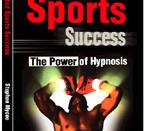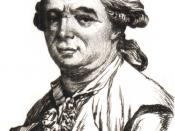What is Hypnosis? The word "hypnosis" originated from the Greek "hypnos" , meaning sleep, and according to Webster's New International Dictionary, is "The induction of a state resembling sleep or somnambulism". This statement is true to the large extent because to the untrained eye someone in a deep hypnotic state could easily be mistaken for someone sleeping. However, it has been a proven scientific fact that for more than 100 years hypnosis can be induced without sleep (because sleep is a symptom and not the basic character trait of hypnotism) so, the word itself is a misnomer.
The Encarta encyclopaedia defines sleep as "An unconscious state where the subject shows little responsiveness to the external world". By this definition, hypnosis is indeed very different, because although seemingly unconscious the hypnotised subject is very responsive to the hypnotists' suggestions. So what is this strange state of consciousness which people find so hard to comprehend? The generally approved definition of hypnosis is that it is a temporary trance-like state induced by suggestion by a trained hypnotist, in which a variety of factors (e.g.
increased suggestibility and alterations in memory) can be induced in response to verbal or other stimuli.
A Brief History of Hypnosis For centuries priests and witch doctors have tried healing by inducing an altered state of consciousness. This was often brought on with the help of elaborate rituals comprising of rhythmic drumbeats or chanting, traditional dancing and various hallucinogenic drugs. The Ancient Egyptians had Temples of Sleep, and the Greeks their Shrines of Healing, where patients were given curative suggestion whilst in an induced sleep. All of these were variations on hypnosis.
The technique of hypnosis as we know it today, was first used and consequently ridiculed in 1765 by Franz Anton Mesmer a Viennese doctor in France, but the actual term hypnosis was coined by the British surgeon James Braid (1795-1860).
Later on, in 1890, Josef Breuer and Sigmund Freud discovered that hypnosis could be of benefit in many other circumstances than just the 'mere suggesting away of symptoms' and changed the approach to the elimination of their apparent cause. Breuer found that in hypnosis, patients would often recall past events and in talking about them would experience an emotional outpouring, subsequently losing their symptoms.
Between the years of 1914 and 1918 during the Great War, the Germans realised that hypnosis was valuable in the immediate treatment of shell shock, allowing soldiers to be returned rapidly to the trenches. A formularised version of hypnosis, autogenic training was devised by a German, Dr. Schultz.
After the Second World War the work of Milton Erickson in the U.S.A. was to have an enormous influence on the practice and understanding of hypnosis and mental processing. He recognised that hypnosis is a state of mind that all of us are entering spontaneously and frequently as part of our normal behaviour pattern.
3) Methods of Inducing Hypnosis From the viewpoint of induction, hypnotism can be divided into two categories: 1. Hetero-hypnosis, the state of sustained suggestibility is induced by a hypnotist.
2. Auto-hypnosis, the state is self-induced.
The results are both the same. Any suggestion that is carried out a period of time after hypnosis is known as post-hypnotic suggestion.
There are many different methods of inducing Hetero- hypnosis (Lloyd Tuckey's method, Bernheim's method, Grossman's method and many more) with every hypnotist boasting their own favourite way. However, they all generally incorporate some variation on the following sequence: "The subject is asked to relax and focus his or her attention, usually on some object. It is suggested, in a quiet but compelling tone, that relaxation will increase and that the eyes will become tired. Soon the eyes show exaggerated signs of fatigue, and it is suggested that they will close. The subject's eyes do shut, and he or she begins to show signs of profound relaxation, with quiet, regular breathing, superficially resembling sleep. It may now be suggested that the subject's eyes are so heavy that he or she does not care to open them and that he or she could not do so even if that were attempted. When invited to try, the subject finds, often to his or her surprise, that the eyes will not open. Through analogous suggestions, the subject's experience may be altered in virtually every sensory modality." Heidenhain a prominent researcher into hypnotism, pins down the hypnotic state to monotonous gentle stimulation of a sense, causing inhibition of the cortical cells, with consequent suspension of the higher cerebral functions. A monotonous sound or scene will therefore produce drowsiness or sleep; and a sudden stimulation, such as a sudden noise or flash of light, will cause the subject to awaken.
Why is a person profoundly hypnotised when they fix their vision onto a brilliant object? As their attention is focused exclusively on a single sensory impression, the subject becomes more ignorant of other things happening around them, until finally they become oblivious to everything but the object. But in time, as the optic centres become exhausted and cease to respond to ongoing stimulation, the visual sense likewise, gives up, leaving the subject with a blank and open mind. In such a state, the hypnotist can implant ideas and the subject having only these ideas to focus on will concentrate on them much harder and really absorb them.
The Use of Hypnosis The use of hypnosis is extremely wide, ranging from psychoanalysis of hysteria and nervous disorder to an anaesthetic in childbirth or purely for entertainment purposes.
Medical uses of hypnosis James Esdaile, a Scottish surgeon working in India, performed several hundred operations quite painlessly using hypnosis (mesmerism) alone as an anaesthetic. He or an assistant would invoke a state, now known as the "Esdaile State", by stroking the patient's body for several hours. He recorded that fatal surgical shock or post operative infection occurred in only 5% of cases compared with the then norm of 50%. It has been proven that using hypnosis like this, as an anaesthetic has many benefits. It is obviously the cheaper method but more importantly the patients recover much faster after the operation and suffer much less post-operative pain. Only recently a woman in America was on the news, because being allergic to normal anaesthetics, she used auto-hypnosis for open heart surgery and remained in a relaxed, painless and conscious state throughout.
Hypnosis is sometimes also employed to treat physical problems with a psychological connection, such as Raynaud's syndrome (a circulatory disease) and faecal incontinence in children. Researchers have demonstrated that the benefit of hypnosis is greater than the effect of a placebo and probably results from changing the focus of attention. Few doctors, however, include hypnosis as part of their practice.
Hypnosis is much more frequently used for more minor problems such as, the handling of stress, in obstetrics and antenatal care; as an adjunct to psychotherapy, and in the management of a wide range of phobic, anxiety and other medical and psychological problems. In these more minor areas the improvement in the patient is often dramatic.
With other cases such as in the management of intractable pain, many mental problems, cancer and terminal illness; hypnosis has been shown to relieve pain but is unable to cure symptoms completely as Alex Cannon realised when he stated that "(vii) In chronic paranoia, I have not is yet found either hypnotism or suggestion of outstanding use, but suggestion has appeared to "quieten down" the delusions; (x) Hypnotism can relieve pain in pleurisy, sciatica, lumbago, neuralgia, encephalalgia, cancer, tabes dorsalis, and even in gastric ulcers, duodenal ulcers, and appendicitis, etc.; in the latter three it would be a crime to hypnotise away the pain, until one was certain of what procedure is definitely to be taken in the patient's interest, e.g. operation. " Health professionals use hypnosis in their area of specialisation and are equipped to use this method as well as a variety of other treatments so that they can choose the one most appropriate for a particular patient. Generally, codes of ethics stop health professionals from advertising themselves as hypnotists. Therefore, those who do advertise are unlikely to have the necessary training to appropriately treat medical or psychological problems.
Using hypnosis to solve crime Hypnosis can be used to take witnesses back to crime scenes perhaps unveiling new evidence and details, which they were unable to remember when awake. However, this method is not used very often because it requires the consent and willingness of the witness to who may not only be sceptical but may not wish to re-enact painful memories.
Courts are also dubious as to whether statements made during a hypnotic state can be relied upon because it is recognised that one is still able to lie under hypnosis if they try hard enough.
Using Hypnosis for self improvement Hypnosis can produce a deeper contact with one's emotional life, resulting in some lifting of repression and exposure of buried fears and conflicts.
Some behavioural difficulties, such as cigarette smoking, overeating, and insomnia, are helped and or stopped by hypnosis. In these cases self hypnosis is often used as the problems are more minor and often purely involve convincing the subject on a matter.
Hypnotism can be used to remember dreams as is explained in "Opening the Doors to the Self: Dreams" by Isa Gucciardi, PhD, which in turn allows psycologists to analyse a persons problems.
As with everything, hypnotism has its fair share of sceptics as is seen in this view "As a treatment technique it is unreliable; spectacular achievements can be obtained in some patients, while for many total failure of benefit is recorded." Using Hypnosis with Animals Animals can be hypnotised, by "fixing" their gaze, by stroking their heads, their bodies, and so forth. The method of changing the nest of a sitting hen, familiar to poultry farmers depends on hypnotism for its success. The fowl's head is firmly held under its wing for a few minutes first, and then she is carried from one nest to the other, and appears to be quite ignorant of the change. The drowsiness induced in many animals by gentle friction of the forehead is a matter of common observation.
On the other hand, tigers, lions and snakes, etc., first hypnotise their victims.
Using Hypnotism for entertainment Stage Hypnotism is a unique branch of hypnotism, which focuses on providing theatrical entertainment for money. Stage hypnotists face many unique challenges that are not encountered in a clinical setting. Rigged props and occasional human confederates sprinkled amongst the spectators are not unknown to stage hypnotists. Generally, hypnotists preselect participants before the show to speed up the induction process during the show. The people whom the hypnotist selects are not plants; they are just the best and most susceptible hypnotic subjects available from the current group of spectators.
Dangers of Hypnosis No person can be hypnotised against his or her will and it unlikely that, whilst hypnotised, the subject will not act against his/her moral principles. In the hands of a professional hypnotist, there is absolutely no danger involved in the process, for the obvious reason that any suggestion that can be "put in" the subconscious can also be "removed" just as easily.
There are some dangers if the hypnotist is not properly qualified as with many professions and no one should consult a hypnotist without validating their professional qualifications before hand.
However, he dangers are fairly minor as long as you stick to Liefbeault's rules (e.g. Always have a witness present etc), the unrealistic scary image created by media has done a great deal of harm to the scientific study, development and application of this fairly unexplored part of science.
7) Conclusion - A Case of mind over matter? I believe that improvements to gained from hypnosis are what you make them. If you go in convinced that hypnotism can cure the ailments that affect you, you are much more likely to notice affects than a sceptic who goes in having already formed a decision.
The importance of mind over matter is shown clearly in the following exert describing an experiment, "In another example, when subjects under deep hypnosis were touched with a piece of wood after being told that it was red-hot metal, they developed skin blisters. If they were touched with red-hot metal and told it was wood, no blisters developed. "What more do you need that there is an enormous interaction between the mind, at the level of belief, and the body?" asks Weil." Graham Wagstaff echoes many when he says that "hypnosis involves nothing more than everyday levels of suggestibility and imagination spiced up with some kow-towing to authority and, on occasion, not a little pretence" Which also strongly suggests that the argument for mind over matter is a strong one.
Research into hypnosis is revealing new material every month, and is helping us to touch on the vast subject of how our brains work, but there is still a long, long way to go before we will (if we ever) fully understand what exactly happens and how the brain reacts under hypnosis.
Bibliography Opening the Doors to the Self: Dreams by Isa Gucciardi, PhD The Science of Hypnosis by Alexander Cannon: Encarta Encyclopaedia Encarta & contributors Europress Family Encyclopedia 1999. Published by Webster Publishing, 1998.
New Scientist Issues - "Healing Consciousness" 30/12/99 "You are feeling very, very sleepyâ¦â¦" 1/7/98





